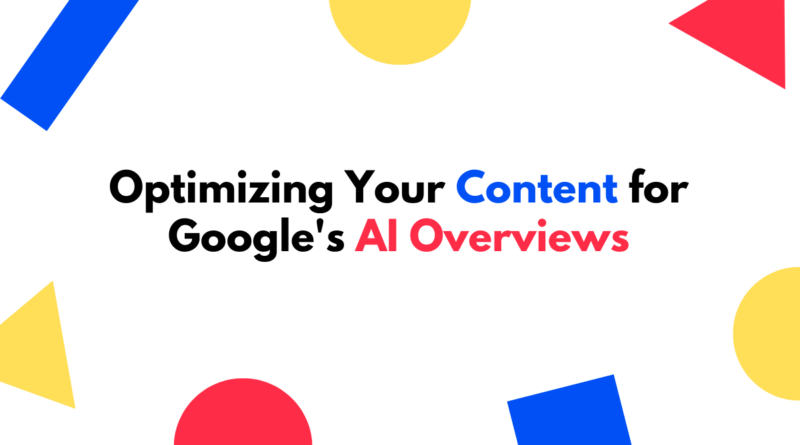Optimizing Your Content for Google’s AI Overviews
Google’s AI Overviews in Search has revolutionized the way searchers consume results. With AI Overviews now more central, it is important to optimize your content such that Google’s AI can effectively sum it up. This article will give insights on How to Structure Your Content for Easy Summarization, The Impact of Clear and Concise Writing and Keyword Placement and Density on what Information Google’s AI extracts.
Structuring Your Content for AI Overview
To enhance the possibility of having your content accurately summarized by Google’s AI, you must structure it in a manner that makes it easily comprehendible by artificial intelligence. This involves:
– Using clear headings and subheadings: Categorize your material using headings (H1, H2, H3) to help the software understand key points and sections.
– Breaking up long paragraphs: Split lengthy paragraphs into shorter ones so as to make summarizing them easier.
– Using bullet points and lists: Present information in a format that is short and simply understandable by the artificial intelligence system.
The Importance of Clear and Concise Writing
Google AI Overview relies on clear writing that is brief. The following are some qualities of contents that could be more accurately summarized by Google’s AI:
– Well-written and free of errors: Make sure your articles are written correctly with proper grammar without any typo errors to have confidence upon which your summary shall be based.
– Concise and to the point: Do not use overly complicated language or unnecessary words which may confuse an artificial intelligence robot.
– Focused on a single topic: Center your content around a one idea so that it can easily extract its keypoints.
Keyword Placement and Density
Keyword placement as well as density might affect what parts of your text are extracted by Google’s AI. While no one knows exactly how it works, people believe that:
– Keyword placement in headings: Putting target keywords within heading tags may increase chances those keywords will appear within the summary generated by an AI .
– Keyword density: Having natural keyword density typically around 1-2% helps to provide context and relevance to an AI.
Monitoring Google AI Overview Accuracy
As AI Overviews become more prevalent, it is important for you to assess the accuracy of Google’s AI Overview. This includes:
– Regularly checking search results: Ensure that your content is being accurately summarized and that the information given by the artificial intelligence system still represents your work as intended.
– Using tools like Search Console: Use data in search console to see how people interact with your data and find improvements accordingly.
Conclusion
To optimize your content for Google’s AI Overviews, structured content, clear writing and strategic keyword placement are all necessary. By following these tips, you can increase the chances of your content being accurately summarized and presented to users in search results. Remember to regularly monitor the accuracy of Al Overview and adjust your strategy as needed to ensure your content is effectively represented in the evolving search landscape.

Pingback: Google’s AI Overviews in Search: The Good, Bad and Ugly - Zing Newz